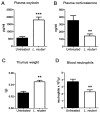This Ref from Nov 2019 shows that Sox2 and Klf4 are sufficient to induce pluripotent stem cells that generate teratomas when injected in mice. The cells lost their identity on day 2-4. So perhaps we should not add rho kinase inhibitors (to sitmulate Klf4) when attempting rejuvenation with TGF-b inhibitors (to stimulate Sox2).
Thanks for your post. There are a couple of reasons I think you are wrong to be worried about this. Firstly, in the paper you reference, they actually used SKM, with c-Myc to increase efficiency. I’ll have to search through the paper again to confirm they could do it without c-Myc, but I’ll take your word for it. Even so it’s going to be a very long shot to do this in vitro. Remember in vitro the cells are sitting in culture being hammered by these factors, and even so it takes 2-4 days to start losing their somatic identities, and then the shift to pluripotency is actually at about day 12. But the main reason I’m not worried is this paper: ‘Direct in vivo Application of Induced Pluripotent Stem Cells Is Feasible and Can Be Safe’.
https://pubmed.ncbi....nd-can-be-safe/
Abstract
Increasing evidence suggests the consensus that direct in vivo application of induced pluripotent stem cells (iPSCs) is infeasible may not be true. Methods: Teratoma formation and fate were examined in 53 normal and disease conditions involving brain, lung, liver, kidney, islet, skin, hind limb, and arteries. Results: Using classic teratoma generation assays, which require iPSCs to be congregated and confined, all mouse, human, and individualized autologous monkey iPSCs tested formed teratoma, while iPSC-derived cells did not. Intravenously or topically-disseminated iPSCs did not form teratomas with doses up to 2.5×108 iPSCs/kg and observation times up to 18 months, regardless of host tissue type; autologous, syngeneic, or immune-deficient host animals; presence or absence of disease; disease type; iPSC induction method; commercial or self-induced iPSCs; mouse, human, or monkey iPSCs; frequency of delivery; and sex. Matrigel-confined, but not PBS-suspended, syngeneic iPSCs delivered into the peritoneal cavity or renal capsule formed teratomas. Intravenously administered iPSCs were therapeutic with a dose as low as 5×106/kg and some iPSCs differentiated into somatic cells in injured organs. Disseminated iPSCs trafficked into injured tissue and survived significantly longer in injured than uninjured organs. In disease-free animals, no intravenously administered cell differentiated into an unwanted long-lasting cell or survived as a quiescent stem cell. In coculture, the stem cell medium and dominant cell-type status were critical for iPSCs to form cell masses. Conclusion: Teratoma can be easily and completely avoided by disseminating the cells. Direct in vivo iPSC application is feasible and can be safe.
The bold highlights are mine. In short, so long as the signalling of the surrounding tissue is stronger than that of the iPSC, no teratomas will form. The issue only occurs if many IPSCs are created and kept in a confined area. This seems to me to be highly unlikely. Also, ROCK inhibitors are effective because they give cells a simpler cytoskeleton. This helps them break free from the extra cellular matrix and become more stem-like. So, using ROCK inhibitors is likely to lead to less confined cells not more.
Realistically we are up against it here to make any iPSCs. Even replicating the Conboys study, which I assume only partially de-differentiated cells and didn’t form any iPSCs, using strong tgf-b inhibition and strong MAPK upregulation, is going to be hard (as we don’t have access to the ALK inhibitor). I have some ideas on how we might attempt to do it. But it will most likely require ROCK inhibitors.
My best guess it will need
- Tgf-b inhibition – it is an open question whether anything we have can repress this sufficiently
- ROCK inhibition – this may address the above somewhat as tgf-b tends to activate ROCK
- cAMP activation – this has lots of helpful cross-talk with both tgf-b inhibition and ROCK inhibition
- MAPK activation – as per the Conboys, but with a smaller/safer dose of Oxytocin

























































